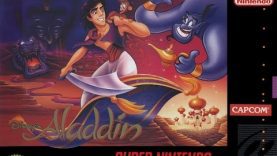Street Fighter II Turbo on the SNES – Gameplay (No Comms)
The Game Shed
We’ve dug out the SNES and had a quick spin on Street Fighter II Turbo. It really is as good as we remembered.
Street Fighter II Turbo – Released on SNES 1994
Ken Vs Guile.
Street Fighter II was released for the Super Famicom on June 10, 1992 in Japan, which was followed by a North American release for the Super NES in August of the same year and a European release in December. It was the first 16-Megabit cartridge for the SNES. Many aspects from the arcade versions were either changed, or simplified in order to fit into the smaller memory capacity. This version also featured a secret code which would allow both players to control the same character in a match, which wasn’t possible in the original arcade version edition. The second player uses the same alternate color palette introduced in Street Fighter II: Champion Edition. The four Grand Masters are still non-playable, but they use their Champion Edition color palette if the code is entered.
Other changes are as follows:
The attract sequence which featured two generic fighters fighting was removed (it was missing in Street Fighter II Turbo, but it was restored for the Genesis version Street Fighter II: Special Champion Edition albeit with the appearance of one of the fighters altered and blood removed).
Some of the voice samples played when characters perform certain techniques or special moves were removed.
The pitch of a character’s voice when they perform a special move differs depending on the strength level. The higher the strength level, the higher the pitch.
The bonus stage in which the player must destroy stacks of flammable oil drums was replaced by a stage in which the player must destroy a pile of bricks (this same bonus stage also featured in subsequent SNES versions, as well as in both Genesis installments although the bricks were red instead of gray). The barrel breaking bonus stage was also removed (it was restored for the two subsequent SNES versions, as well as both Genesis installments) and as a result, the bonus stages are now played after every four matches (rather than every three).
The tunes of the soundtrack were not only arranged, the music that plays when a character is losing a match is arranged differently from the arcade version, since the same music is played but with the tempo raised (later SNES and Genesis installments also featured similar changes). Tatsuya Nishimura, who had recently joined Capcom from TOSE, arranged the soundtrack for the SNES version, with assistance from Shimomura, Abe, and Sakaguchi.
Some techniques were deleted, such as Chun-Li’s close standing medium punch.
The walking animation of the characters when retreating from an opponent is the same when advancing, only played in reverse (the other SNES and Genesis versions also featured this change).
The voiced countdown during the continue screen, as well as the reading of each country’s name, were removed. Moreover, the font used during the continue screen is different as well (a noticeably larger number font).
Two of the elephants were removed from Dhalsim’s stage, leaving a total of four.
The two guitar players and other background characters were removed from Vega’s Stage.
The palm tree in the foreground of Sagat’s stage was removed (it was removed in the Champion Edition arcade game).
The blood splatter behind the “VS.” text before each match was removed. The effect was added back in the later port versions, and its color changed to purple in Super Street Fighter II.
The post-match messages for certain characters (like M. Bison and Balrog) were altered.
The visuals and script in some of the endings are a bit different from the arcade version.
The upper and lower portions of the screen are covered in black bars, shortening the vertical length of the game screen (the PC Engine and Genesis ports also added these black bars). This was done to compensate for the reduced size of the character sprites and make the change less noticeable to players.
A “VS.” mode was added for two players to play a series of matches (wins/losses/draws), having the option each time to change their character, the stage, handicap, etc.







![[AMSTRAD CPC] Star Sabre (2009 – 128k version) – Longplay & Review (HBGs #3)](https://b1734514.smushcdn.com/1734514/wp-content/uploads/2017/09/amstrad-cpc-star-sabre-2009-128k-version-longplay-review-hbgs-3-youtube-thumbnail.jpg?lossy=1&strip=1&webp=1)
